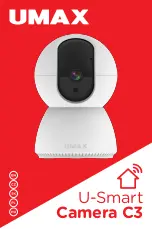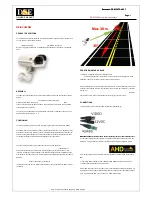
climates, carry spares kept in a warm pocket to ensure continued operation should those in the camera
malfunction. (The performance of batteries which malfunction due to cold will return to normal when batteries
are exposed again to room temperature for several hours).
Batteries Replacement
When replacing batteries, use 1.5V alkaline batteries LR44 or silver oxide batteries SR44 (Eveready S-76,
UCAR S-76, Ray-O-Vac RS-76, Mallory MS-76, or equivalent).
Although 1.3V mercury batteries are the same shape and size, they will not operate the camera normally.
4www.butkus.org
Either alkaline or silver oxide batteries may be used as replacement, but always replace both together and do not
mix brand and types, also, never mix old and new batteries.
Handling Cautions
Be sure that the shutter release button isn't pressed down when carrying the camera or when putting it away as
the LED display will stay on and drain the batteries.
The depth of the tripod socket is 2-3/16 in. (5.5mm). If a tripod is used with a mount screw longer than this, the
internal mechanisms of the camera may be damaged. Do not use excessive force when mounting the camera on
a tripod.
Avoid strong vibration and shock since this may cause adverse influence on the delicately adjusted parts of the
camera. Be careful not to drop the camera or allow it to strike against objects.
Do not keep the camera for extended periods where temperature is above 100 F (40 C) or below 5 F (-15 C), or
where there is excessive humidity or salt in the air. The camera mechanism or film can also be damaged if the
camera is left for a long time in a place where there is naphthalene or formalene gas. Always store color film at
the designated temperature.
Never touch the surface of the mirror or lens with the hands. Any dust should be blown off with a blower or
wiped off by lightly applying a soft cloth. Be especially sure to never rub the surface of the mirror.
Always clean the camera carefully after photographing at the beach or other place where there is salt in the air.
Clean the many plastic parts by gently wiping with a soft, dry cloth. Never use solvents when cleaning.
Inspect the camera periodically when it is not being used. Be sure to inspect moving parts before trying to take
important photographs. This includes the film advance and shutter operation, electronic flash synchronization,
etc. Test shots should also be taken if possible to discover any irregularities that may exist. (Incidental damage
which results in this camera malfunctioning will not be compensated.) Do not try to repair or lubricate the
camera if some irregularity is discovered. Leave this to your Mamiya dealer.
Summary of Contents for ZE-X
Page 6: ...Description of Parts ...



































